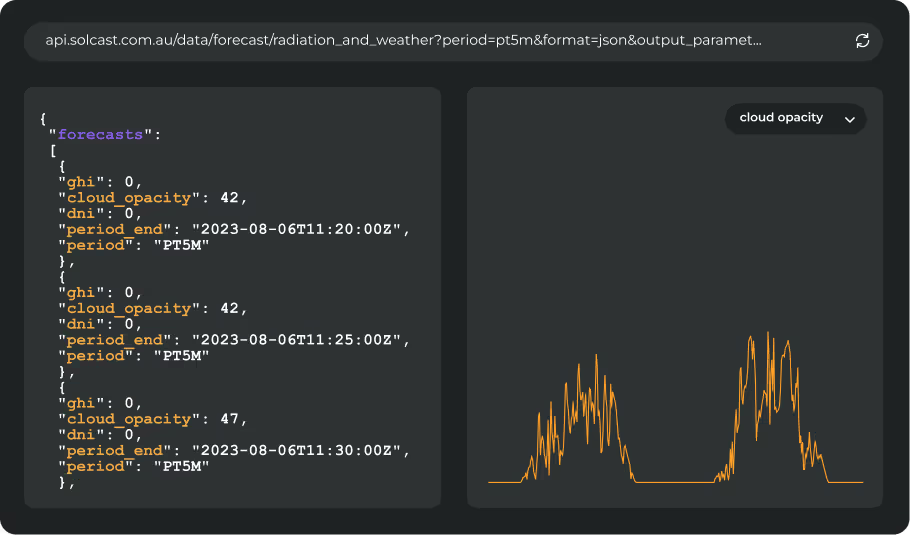December brought striking contrasts in solar irradiance across Europe, with Northern Europe experiencing irradiance levels up to 30% below the already dim seasonal average, while regions south of Europe’s major mountain ranges saw irradiance up to 30% above typical levels. The pronounced variability, common in Europe’s winter months, was driven by an unusually northerly jet stream that shifted weather patterns, resulting in stark regional contrasts.
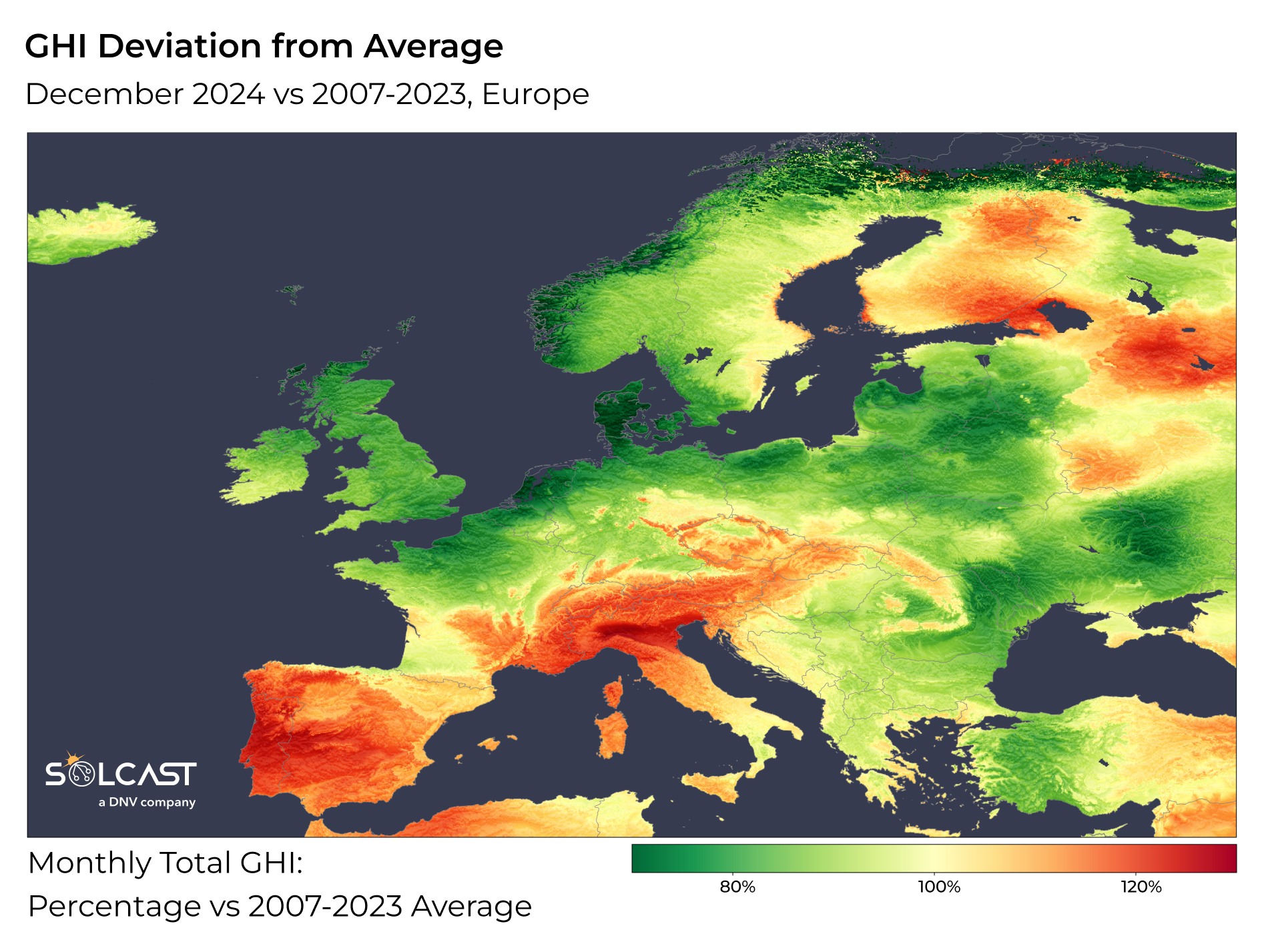
Northern Europe faced one of its cloudiest Decembers in recent years, with irradiance falling as much as 30% below the long-term average. The jet stream's northern position allowed the Azores High to move further north than usual, steering a series of low-pressure systems over Northern Europe. This configuration brought persistent cloud cover to France, the UK, Germany, Poland, and the Baltic states. With irradiance already limited by short winter days during December, the additional cloud cover reduced solar potential to strikingly low levels across these regions. Despite the sharp percentage drop in irradiance, the absolute impact on solar generation in the north was less impactful due to the already low winter baselines.
.png)
In contrast, the Iberian Peninsula and Northern Italy experienced a notably sunny December. The Pyrenees and Alps acted as barriers, shielding Southern Europe from the northward-shifted storm track. This naturally divides trapped cloud and precipitation in Northern Europe, leaving Portugal, Western Spain, and Northern Italy basking in relatively clearer skies. In these areas, irradiance reached up to 30% above the long-term December average, providing a much-needed boost to solar energy potential.
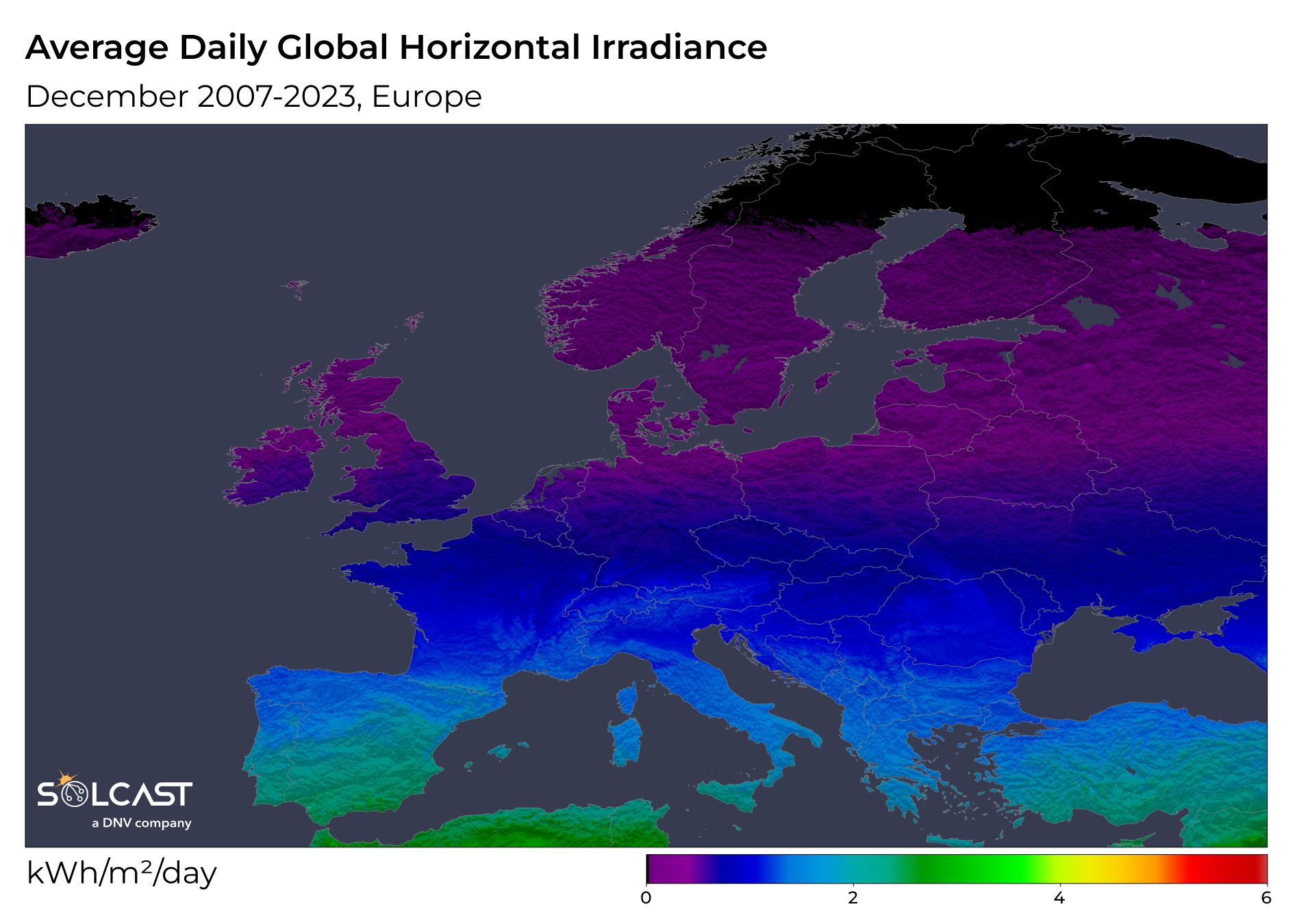
Further east, the Eastern Mediterranean faced its own weather-driven challenges. Low-pressure systems in the region pushed moisture and cloud cover onshore, leading to mild reductions in irradiance. Although the impact was less severe than in Northern Europe, irradiance levels in parts of Greece, Turkey, and the surrounding areas dipped by as much as 10% below the December norm.
Track weather conditions, cloud movements, and irradiance-influencing factors that impact your solar generation. Access bankable actuals and accurate forecasts when you sign up for a Solcast API toolkit. You can reach out to our team for an extended trial.








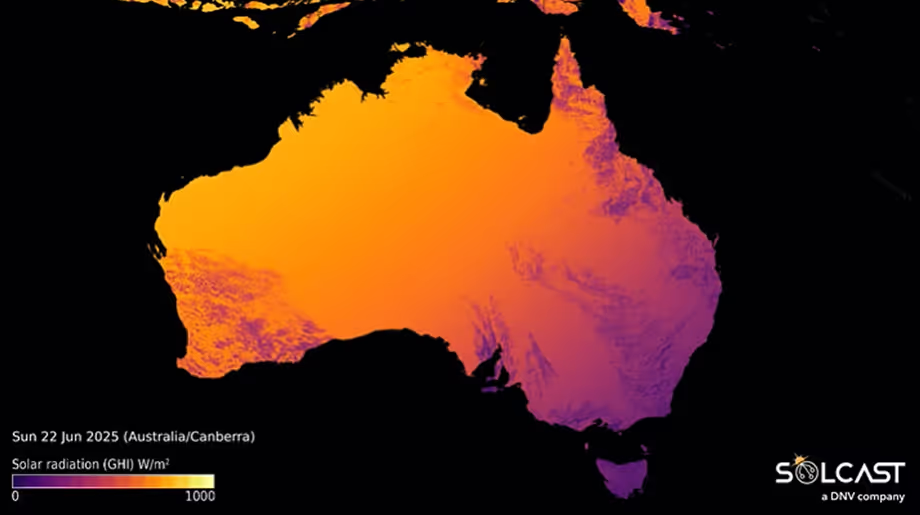
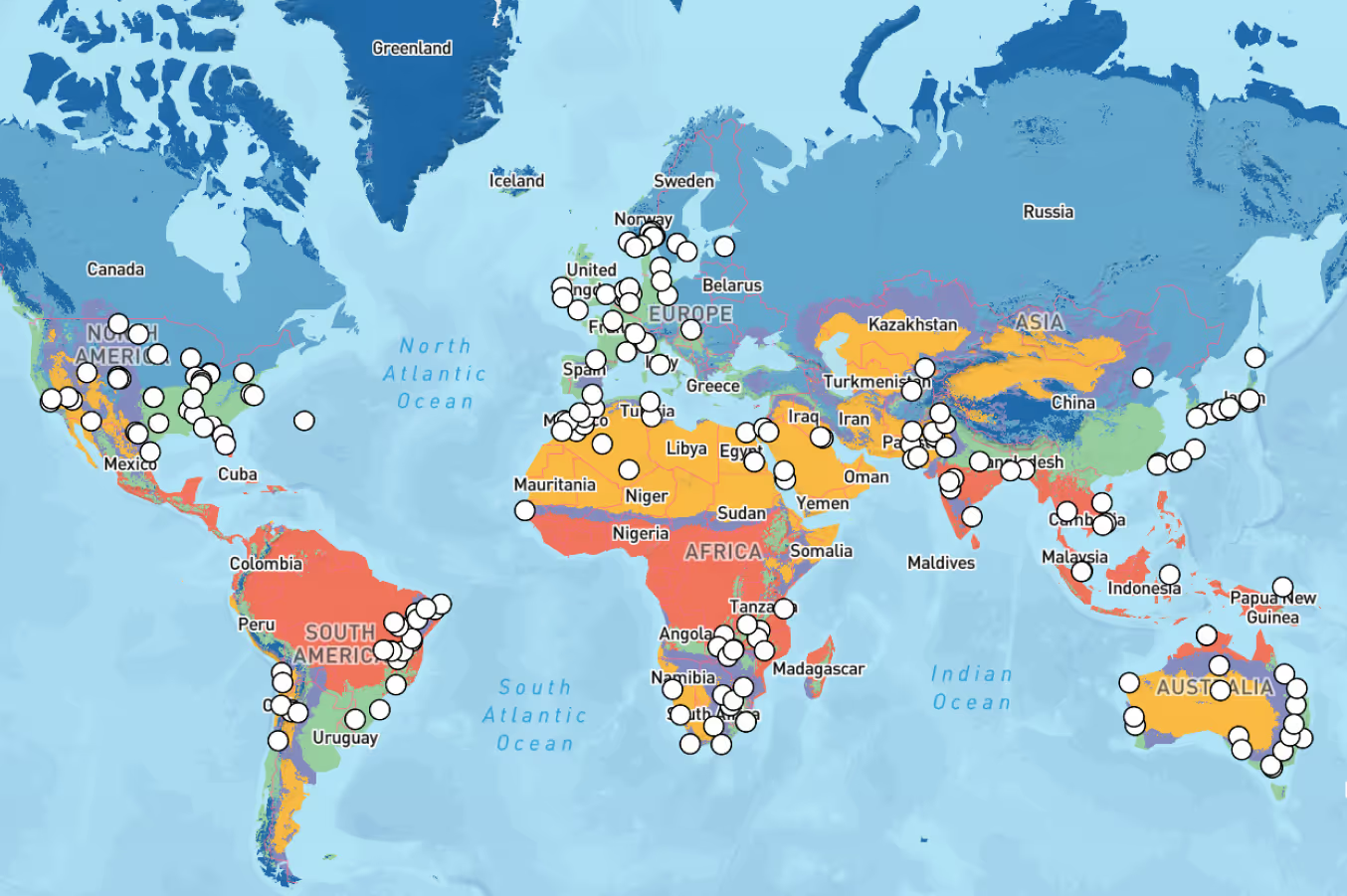
.avif)
